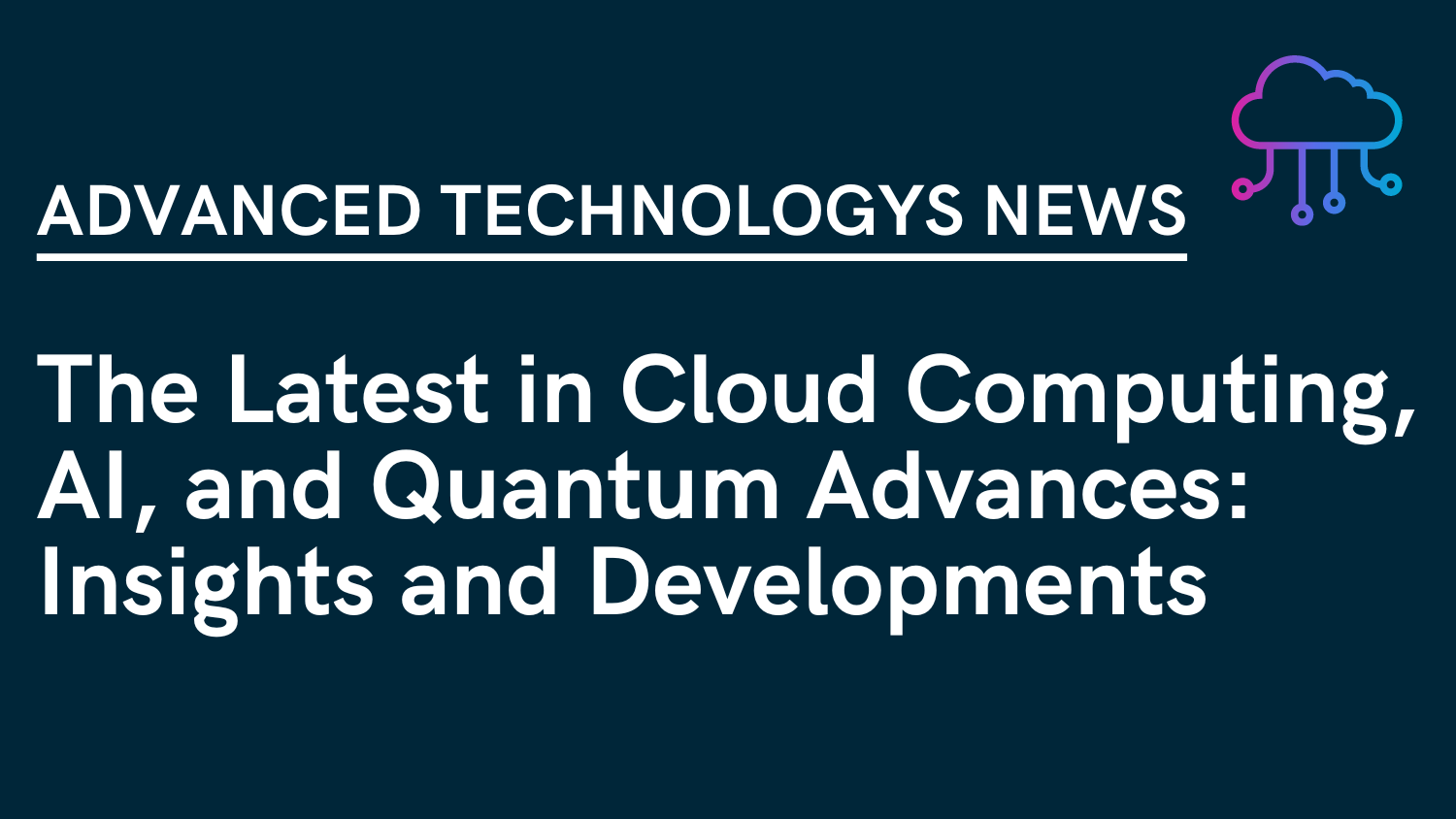
12 May Emerging Trends and Strategic Initiatives in Global Cybersecurity and Technology Development
Cloud Computing: Broadcom’s Price Hike and Market Reactions
The European Cloud Alliance (ECA) has highlighted concerns regarding Broadcom’s recent decision to significantly raise the prices of VMware licenses, following its acquisition of the company two years ago. In response, OVH Cloud, which has an agreement with VMware, has communicated to its customers that it hopes to mitigate the price impact in several cases. Despite this effort, the ECA emphasizes the need for European players to lessen their IT dependencies on companies like Broadcom/VMware, advocating for greater autonomy in the tech sector.
Equinix: Commitment to Sustainable Practices
Equinix, a leading provider of data center and digital infrastructure services, has been recognized as a “mission-driven company.” This label underscores their dedication to sustainable business practices and aligns with broader industry trends towards environmental and social governance.
Artificial Intelligence: Balancing Global Influence
First, by April 8 a set of 8 large IT companies have announced they jointly launch a consortium AI-enabled ICT workforce, aiming to enhancing and better qualifying the human roles most impacted by AI. Engaged companies are : ACCENTURE, CISCO, EIGHTFOLD, GOOGLE, IBM, INDEED, MICROSOFT, SAP. The first very visible point is the balance of forces : 7 US companies, 1 European. However, we dont want to take a « nationalist posture ». That US companies want to work on the future of qualifications and human resources is not bad news, providing this is serious and not « AI-washing ». No, the point we want to make is that the way we approach human resources qualification, is highly reflecting the culture and common values of a country, or a group of countries (here the EU). For all sorts of reasons, the way to manage human resources is different between the USA and the EU. Both approaches have their merits and their shortcomings, it’s not a matter of ranking, but of differences. European companies and institutions shouldn’t wait a second to work together to anticipate the impact of AI on workforce, and prepare the evolutions.
At the same time, the EU and the USA have hold their 6th meeting of the Trade and Technology Council (TTC), which was established in June 2021. The final statement includes the reaffirmation that AI risks should be mitigated and that support should go to reliable and secure AI techs. It also includes views on 6G, on chips-manufacturing with the aim to stop the use of PFAS (« eternal polluants »), on working together on eID, and finally on coordinating efforts on human Talents enhancing. Again, it would be more than useful to see a clear position of the EU side on these subjects.
For instance, on eID, the EU has just launched its new standard Eidas2 : is the discussion in TTC with the US counterpart likely to have an impact on eIDAS2 ? if not, what’s the proposed target ? In general, in such negotiations, while the US party comes with specific well defined goals, the EU objectives often give the impression to be vague and moving. The ECA sees eID not only as matter of economic growth, but also as a frame for citizens’ easy access to public (and maybe private) services, and exercising their rights. As in the debate on mastering the impact of AI on workforce future qualifications, the EU must stand on its values.
Another example : AI. This TTC meeting occurred a few days after the White House issued a memorandum on Mitigating the riks of AI. As a matter of fact, the EU has its own interpretation of the way forward, with its AI Act. Let’s see on which side the balance will have leaned.
FLEX AI
FlexAI, a French start-up française, has announced on April 24 an earthly stage funding of 28,5 M€. Its aim is to develop a solution of “virtual infrastructure” for AI developers to train new models without large computation facilities. The idea is to build a flexible solution, as easy to use as opening a workspace on a Cloud system. Customers will only need to specify their need, FlexAI will propose a pay-as-use model.
ECA comment : during a while, it seemed that the AI race was mainly a race to computation power. A Large Language Model was “necessarily better” if trained on more data. Happily enough, the cards begin to be reshuffled. Quality of data, capability to mixt generic and dedicated data, flexible solutions to access computation power, and last but not the least, possibility to rely on data not belonging to one single culture … all this is making the race more complex and its results still open. Not to talk of the crucial question : how to balance the use of AI and the reduction of the energy footprint ?
Quantum Computing: Strategic Partnerships and Funding
CRYPTONEXT
a post-quantum communication company, secures a partnership with TIEMPO SECURE, a company specialized in providing cybersecurity elements to chips manufacturers.
PASQAL and WELINQ,
two French start up’s expert in quantum computing, have agreed on a partnership. Welinq will bring its capability to design networks of QBits processors, PASQAL its ability to build groups of QBits. The aim is to provide rapidly the power and the error tolerance that should be found in bigger configurations, without having to engineer them.
QUANTONATION,
an investment fund specialized in quantum computing, has secured a second round of funding, at 70 M€, with a final target of 200 M€. This amount will be used to support early stage industrial ventures worldwide. The fund is known to have invested in French quantum ventures, as CRYPTONEXT, PASQAL, QUANDELA, LIGHTON …
5G and IoT: Expanding Horizons
Further to the report issued two years ago by the French 5G Mission, chaired by Philippe HERBERT, 27 private 5G experimental platforms are now running, ten being now fully operational and handled by industrial companies, while the General Enterprises Directorate (part of Ministry of Economics and Industrial and Digital Sovereignty) has selected two FabLabs. SOme roadblocks have been identified, they concern cost, frequency availability, but also technical difficulties at implementation stage. Nevertheless, projects keep multiplying, even in agriculture, so the outlook gets brighter.
COMPRESSION PROTOCOLS
Such protocols are widely used in telecommunication. And more recently in IoT monitoring. Among others, a protocol is merging as a possible standard, SCHC (Static Context Header Compression. ACTILITY, a French company expert in LoRa communication and more generally in LPWAN (Low-Power Wide Area Networks), has built a partnership with IMT (a Tech University in Western France) to provide further developments of the protocol and build new services. Many sensors systems, such as LINKY for electricity distribution, resort to this protocol.
SPACETECH
THALES ALENIA SPACE, the French-Italian spacetech company, has designed, with the help of the Luxemburg space Agency, a model to foresee floods based on IoT sensors and AI-aided interpretation of satellite images. The system will be used to predict the impact of floods. As the method is agnostic, other systems can be easily built to foresee other dramatic events, such as the impact of forest fires.
Thales Alenia Space again: the company will design the two AI-based applications to be embarked on Φsat-2, aCubeSat to be launched by the European Space Agency next June. An application will detect anomalies on large water surfaces, while the other will provide early detection of fires and monitor their impact.
GREENERWAVE a French young company having just secured a 15 M€ funding, launches a dual communication terminal to connect with both low orbit satellites and geostationnary ones. The module is AI powered to automatically adapt to the appropriate satellite and relies on an energy saving technology. It’s designed for uses that require a totally seamless communication wherever the mobile is located.
IoT by satellite booming
According to ABI Research, the market of IoT applications provided by satellite will ramp up to 4 billion $ in 2030. The market is pushed by technology (nano satellites, dedicated software), by a growing demand of monitoring (agriculture, natural disasters, ocean data …), themselves proposed by a booming number of actors.
COLLABORATIVE WORK
Alain Garnier, the founder and CEO of JAMESPOT a French collaborative suite, sheds light on the ambitions of his company. In terms of functionalities, he says they are equivalent to Microsoft 365, with all the elements of collaboration, including videoconference, files sharing and communication tools, as well as inteface with classical business tools such as Salesforce, meeting management … The company’s revenues climb at 25% per year, customers being entities above 100 persons to large ones. Details can be found here (in French)
There seems to be a lot of excitement around new European collaborative suites. Generally based on Open Source bricks, the systems designed by the French WIMI, CEO-VISION, TIXEO, WATCHA, TALKSPIRIT, the Swiss SHAREKEY and others propose a set of functionalities which more or less compare with those of the Zoom, Teams and Google Meet : videoconference, shared repository, messaging… Some differences are due to the degree of security which is provided, the economic model. We will cover this topic in further copies of this Newsletter.


